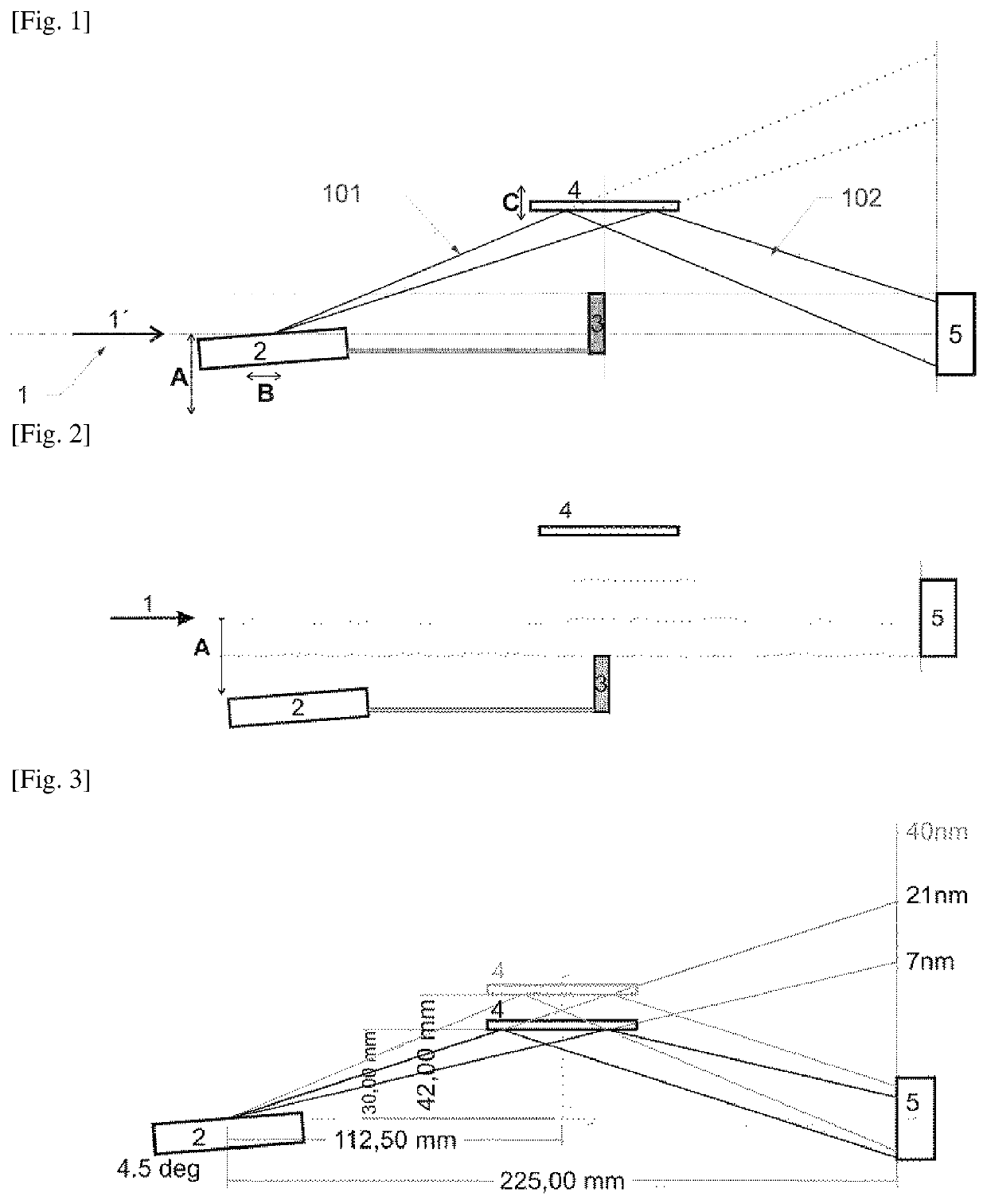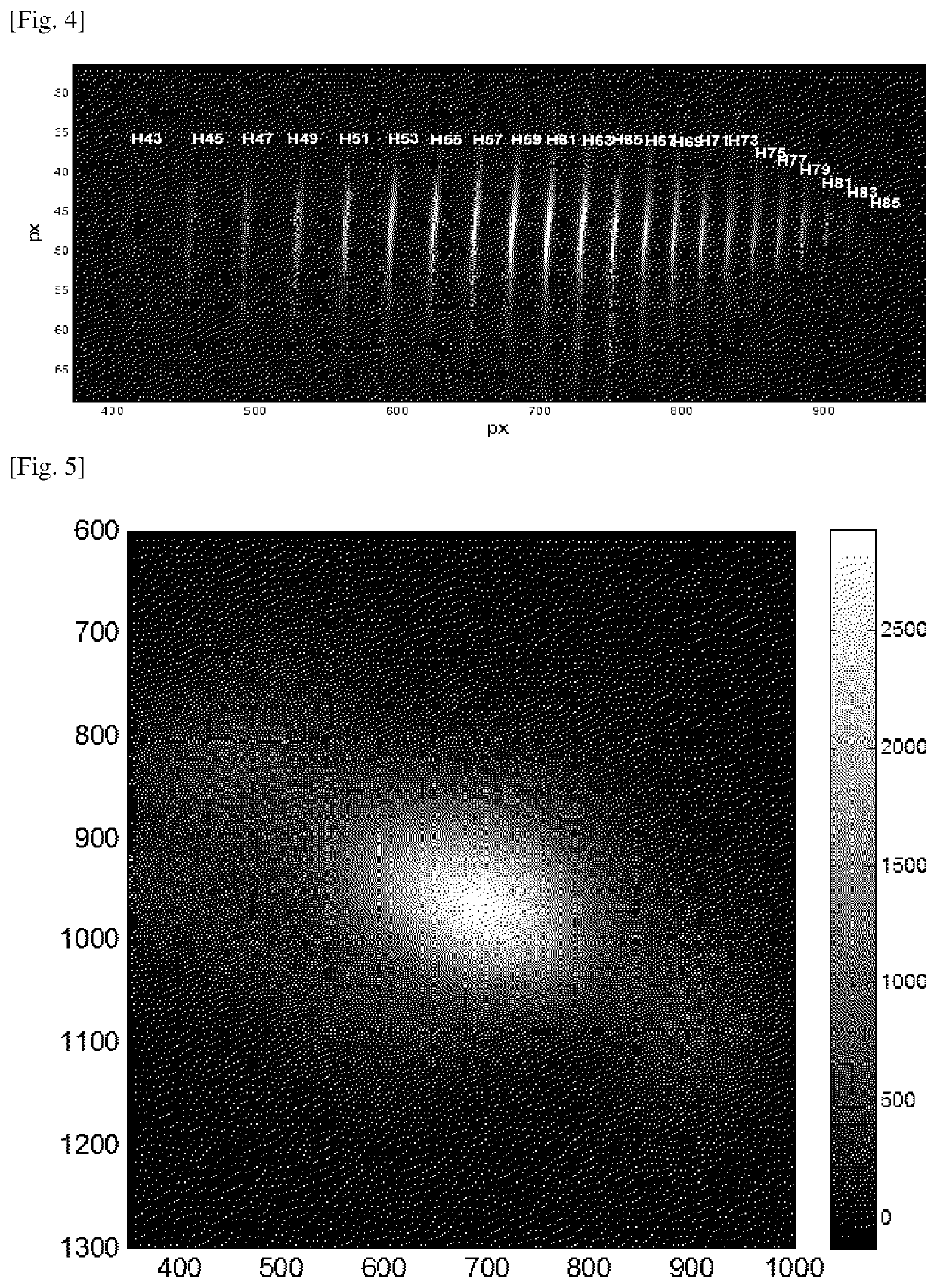Apparatus for spectrum and intensity profile characterization of a beam, use thereof and method thereof
a spectrum and intensity profile and beam technology, applied in the field of devices, use and characterization of beams, can solve the problems of reducing the quality of detected spectrum, requiring two independent detectors, and requiring a large investment. the effect of reducing the quality of the detected spectrum
- Summary
- Abstract
- Description
- Claims
- Application Information
AI Technical Summary
Benefits of technology
Problems solved by technology
Method used
Image
Examples
Embodiment Construction
[0046]An apparatus according to present invention was constructed to determine the spectrum and the intensity profile of the beam 1 of high harmonic frequencies generated by the interaction of the intense femtosecond laser with the gaseous environment in the research center PALS (joint laboratory of Institute of Physics AS CR and Institute of Plasma Physics AS CR).
[0047]FIG. 3 represents a sketch of the apparatus according to the invention comprising:[0048]a diffractive element 2 diffracting the beam 1 into spectral components 101;[0049]a beam block 3 attached to the diffractive element 2;[0050]a reflective element 4 configured to reflect the spectral components 101 diffracted on the diffractive element 2;[0051]a fixed detector 5 positioned on the axis of the incoming beam 1 and configured to receive reflected spectral components 102 from the reflective element 4; and[0052]a device for translation of the beam block 3 and the diffractive element 2; wherein the device is capable of mo...
PUM
| Property | Measurement | Unit |
|---|---|---|
| incident angle | aaaaa | aaaaa |
| wavelength | aaaaa | aaaaa |
| incidence angle | aaaaa | aaaaa |
Abstract
Description
Claims
Application Information
 Login to View More
Login to View More - R&D
- Intellectual Property
- Life Sciences
- Materials
- Tech Scout
- Unparalleled Data Quality
- Higher Quality Content
- 60% Fewer Hallucinations
Browse by: Latest US Patents, China's latest patents, Technical Efficacy Thesaurus, Application Domain, Technology Topic, Popular Technical Reports.
© 2025 PatSnap. All rights reserved.Legal|Privacy policy|Modern Slavery Act Transparency Statement|Sitemap|About US| Contact US: help@patsnap.com


